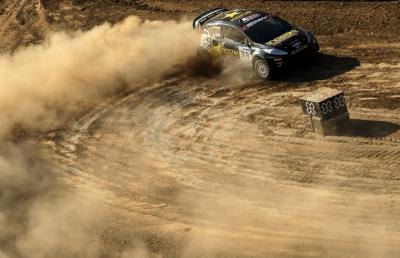Thursday, November 14, 2013
Differences Among 4WD AWD and 2WD

Its a debate nearly as old as the automobile itself, but didnt really come to light in the public mind until the late 1980s and early 1990s. While rear-wheel drive was originally a concession to simplicity, later manufacturing methods would give front-drive an edge where engineering costs were concerned. All-wheel drive would seem to combine the best of both worlds, but it, too, comes with a few provisos.
Drive Layout
Rear wheel drive vehicles typically use a longitudinal (front-to-back) engine and transmission arrangement that sends power to the rear wheels. Front-drivers typically use a laterally (side-to-side) oriented engine and transaxle that sends power to the front steering wheels. All wheel drive vehicles based on front-drivers (like the Mitsubishi Lancer Evolution) typically use a transaxle with an additional rear-facing output shaft that sends power to the rear axle as well as the front. AWD cars based on RWD counterparts (like the Chrysler 300C AWD) generally use a transfer case bolted to the back of the transmission like a 4WD vehicle would.
AWD vs. 4WD -- Whats the Difference?
A 4WD truck uses a transfer case that solidly locks the front and rear axles together. A 4WD system always splits power evenly; 50 percent to the front and 50 percent to the rear. An AWD system uses a differential similar to the limited-slip differentials used in the axles of many performance cars. Generally speaking, these limited-slip center differentials use a viscous-coupling design that uses a sticky fluid to transfer power from the input shaft to either of the axles. The center differential defaults to either the front (i.e. Lancer Evo) or rear (i.e. Lamborghini Murcielago) axle, engaging the other axle only when the computer detects tire slippage at the default axle.
FWD Advantages
Prior to the 1980s, front-wheel drive was thought of as the be-all-end-all of drivetrains. It offered directional stability, made the car practically impossible to spin, didnt require a space-hogging transmission tunnel inside the cars cabin and was cheaper to produce. This remains as true today as it ever was, especially where production costs and interior room are concerned.
RWD Advantages
The high-powered engines that debuted during Reagans tenure brought to light one glaring fault in the FWD design: a single pair of tires could steer the car, or they could accelerate it, but they couldnt do both at the same time. This means that a FWDs front tires will lose traction when accelerating out of a corner, causing massive under-steer or "push." Applying the throttle while cornering in a RWD car causes the chassis to rotate around the cars center. allowing the driver to adjust the vehicles orientation in mid-corner in order to maintain the intended path.
AWD Advantages
AWD cars are all about traction and power delivery. The AWD systems viscous-coupling differential allows the computer to send power to whichever axle currently has the most traction, which means that an AWD car will always try to go wherever the steering wheel is pointed. Consequently, an AWD car can use a much more powerful engine without fear that the power will go to waste.
Comparison
FWD is the drivetrain of choice if all you care about is getting from point A to point B in relative comfort and efficiency. RWD is for those who enjoy the dynamics of driving, of mastering vehicle control by careful and balanced application of throttle and steering input. AWD is the most versatile of all drivetrains, offering Velcro traction, predictable steering response and consistent performance. However, AWD systems do add some weight, cost a bit of fuel economy and are arguably less rewarding to drive than a good RWD car. In short, AWD is safer and technically "better," but RWD is more fun.
No comments:
Post a Comment